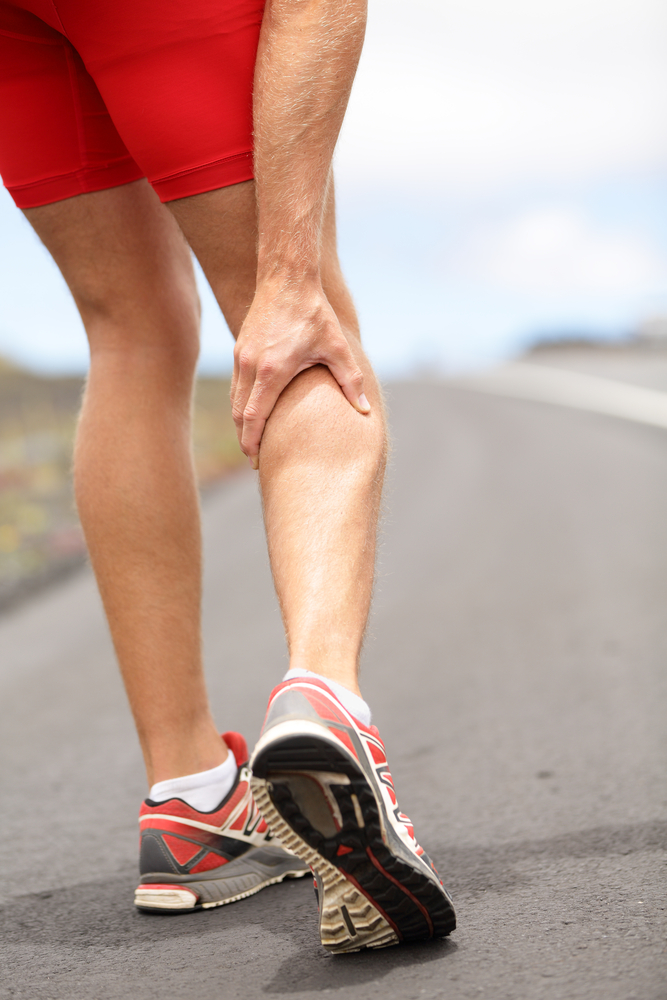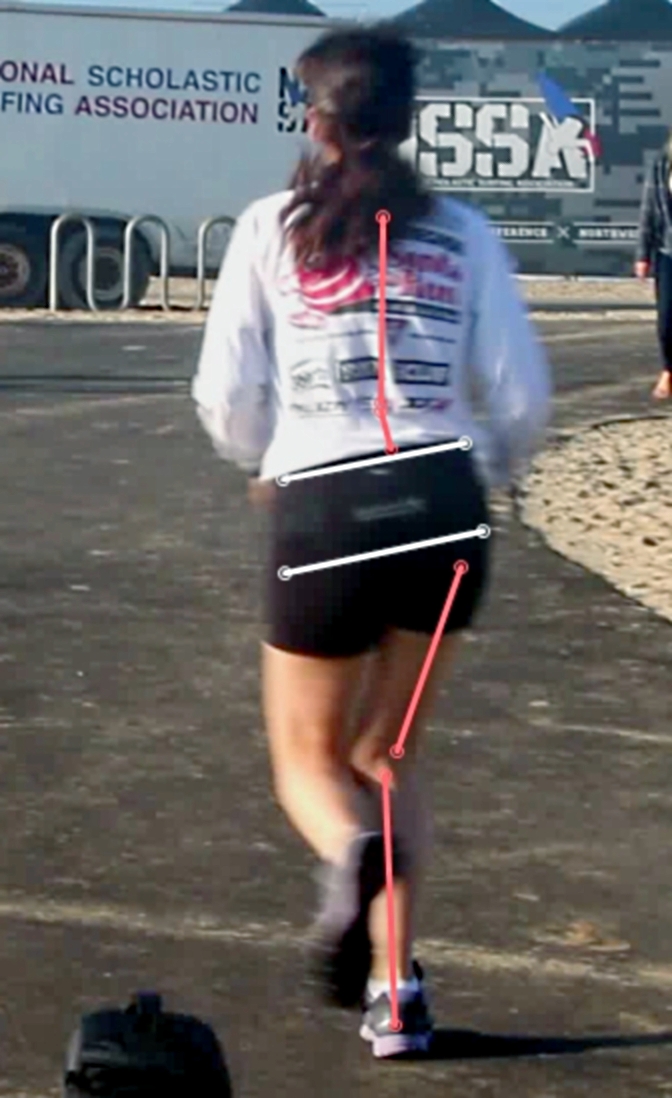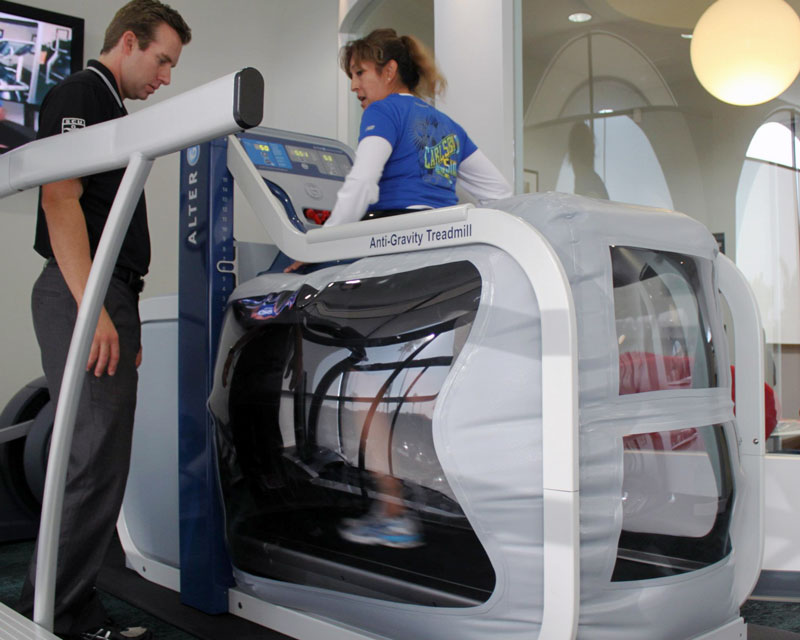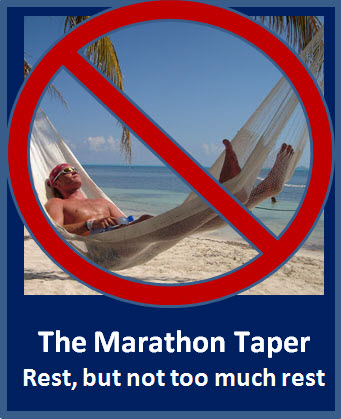Since leg cramps occur for different reasons while running, we must first define the situations they occur in the most. Defining these different situations will ultimately help us understand strategies to both avoid cramps and resolve cramps when they do occur.
“Cramps” are involuntary full muscle actions, in which one’s willpower to relax that muscle is not possible.
Here are two examples that explain when and why leg cramps occur:
 1. At Rest: Situations such a sleeping, sitting or standing, are all instances where leg cramps could occur while at rest. When a person is at rest, they are not exerting much effort with any particular muscle.
1. At Rest: Situations such a sleeping, sitting or standing, are all instances where leg cramps could occur while at rest. When a person is at rest, they are not exerting much effort with any particular muscle.
2. “Exercise-Induced Muscle Cramps (EIMC),” is experienced most often during a lengthy exercise such as running, fast walking, cycling, swimming, or hiking to name a few. The EIMC is also very common in high intensity sports, especially when the performance is of repetitive high-intensity exercise such as tennis, basketball, grappling, downhill skiing, or sprint running (several bouts of 100-400 meters).
Muscle cramps that occur in the legs while at rest, are most commonly caused by impaired “nutrients” that allows the leg muscles to stop contracting. These impaired nutrients include oxygen, fuel (glucose), and electrolytes such as potassium, sodium, calcium, and magnesium. Another common cause of leg cramps at rest, are problems with the nerves that supply the muscles in the legs. These “nerve cramps” most often affect one leg more than the other, but can also affect a person’s legs on both sides.
The delivery of these nutrients to the leg muscles at rest can become compromised by decreased blood supply to the leg muscles due to dehydration leading to low blood volume, low blood pressure. Affected blood circulation to the leg, can also occur because of circulatory problems caused by vascular disease, diabetes and/or smoking.
Impaired blood supply to the legs, can also be related to over-training where the higher intensity, long duration (or both) of the muscle work leads to micro-injuries to the muscles of the legs. As a result of the trauma caused to the unprepared muscles, swelling sets into the soft tissue a few hours later, causing a decrease in blood flow.
The other common cause of muscle cramping at rest, is the low nutrient content in the blood that can be corrected by supplementing a proper mixture of electrolytes and balanced nutrition. Also, several medications can make you more prone to experience cramps at rest, such as certain blood pressure and diuretic medications (water-pills), corticosteroids and others (check the list of potential side effects).
In the past, runners have put effort towards supplementing their fluid intake with electrolytes and energy nutrients, in an attempt to avoid exercise-induced cramps in their legs and feet. These efforts have shown to be somewhat helpful for the less-seasoned runner.
Unfortunately, “unexpected” cramps are known to occur with both the recreational runner and the experienced performers, despite the supplemental intake during training and races.
Dr. Robert K. Clark, professor of Human Physiologist, summarizes the cellular mechanisms for muscle action and describes that energy is needed for both contraction and for relaxation of all muscles. He specifically describes how muscle relaxation can occur after a voluntary contraction while exercising. He explains that energy in the form of adenosine triphosphate (ATP) is necessary to induce the release of calcium in order to generate the contraction of a muscle fiber. However, in the relaxation phase, those released calcium’s need to be “actively” transported out of the sarcoplasm, so the muscle action stops. The transport of these calcium ions is performed by specialized “pump” channels (Calcium ATPase), which also requires the same energy molecule, ATP. Also, the nerve action to the muscle is dependent on another “active pump” (Sodium-Potassium-ATPase) to regulate the rate of muscle contraction-relaxation cycles. If the concentration of ATP is undesirable, the calcium ions remain concentrated in the sarcoplasm and the nerve is unable to induce the muscle into relaxation. This then results in a sustained and uncontrolled muscle fiber contraction (muscle cramp). The ATP molecule, which is needed to begin muscle contraction, is also needed to cause the muscles to relax. The ATP (adenosine triphosphate) is then highly concentrated and stored in the muscle tissue in much lesser amounts during aerobic metabolic pathway from the common nutrients: glucose, amino acids, and fatty acids.
Our current scientific knowledge and cumulative experience regards exercise-induced muscle cramps as the following:
- Balance between the ATP production and ATP use is imperative to maintain a long performance. Thus, increasing running intensity (higher speed or running on a leveled changed course) and increasing running distance to an untrained level, is the most common cause of ATP depletion.
- Early: ATP depletion leads to impaired ability to contract the muscles in the desired fashion, leading to compensation and poor form.
- Late: ATP depletion leads to sustained involuntary muscle contractions (muscle cramps).
- ATP concentrations are directly related to the muscle readiness to perform. Lack of adequate rest (recovery) prior to the race or training session is the second most common reason to reach ATP deficit during a race or training.
- ATP muscle stores increase with specific endurance training.
- ATP concentrations are poor in damaged muscles.
- Waste of ATP is found when compensatory running mechanics (poor form) is used due to fatigue, injury or weakness.
- Nerve supply compromised (like in sciatica), will lead to further muscle damage, decreasing the ATP stores.
- Muscle imbalance will lead to joint and muscle damage leading to poor electrolyte and ATP storages, and to decreased blood supply due to local muscle swelling.
Solutions: When cramps happen during exercise:
- Gentle stretching
- Massage the area to increased blood flow
- Elevate the legs to decrease blood pulling
- Hydrate with electrolytes, glucose, and amino acids
- Rest and decrease the intensity (pace) in order to decrease lactic acid and to ultimately replenish the ATP storage in the muscle.
Prevention:
- Specific training must be given to the affected muscles, similar to the way muscles work during running. For example, the calves, hamstrings, and shins, have to be trained using ECCENTRIC contractions (CONTROLLING higher load during the “negative” movement phase of the exercise), such as in Lunges Forward, Lunges Sideways, and Lunges Backwards. Perform these exercises and keep track of the difference in strength and or control when loading the right leg versus the left leg. The main goal of these exercises is to achieve near the same strength and endurance on both sides.
- Train these muscles to perform in both endurance (20-30 reps) and strength exercises, in order to maintain proper mechanics and an efficient running form during the last part of the training session or race.
- Allow for a full ATP recovery to the largest loaded muscles in running (i.e., calves, hamstrings, shins, feet, hips, low back) before a race with optimal rest, nutrition and hydration.
- Seek advice from your sports medical professional if these symptoms do not improve despite corrected training and nutritional efforts.








Leave A Comment